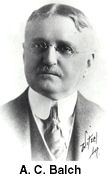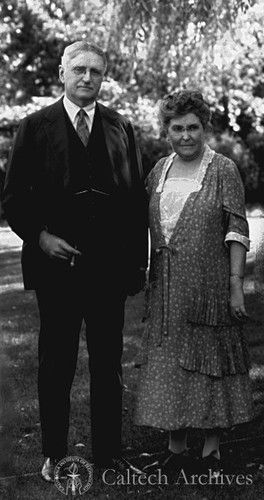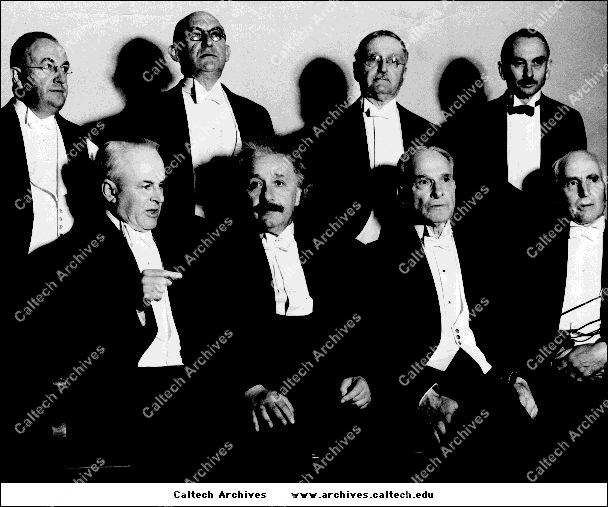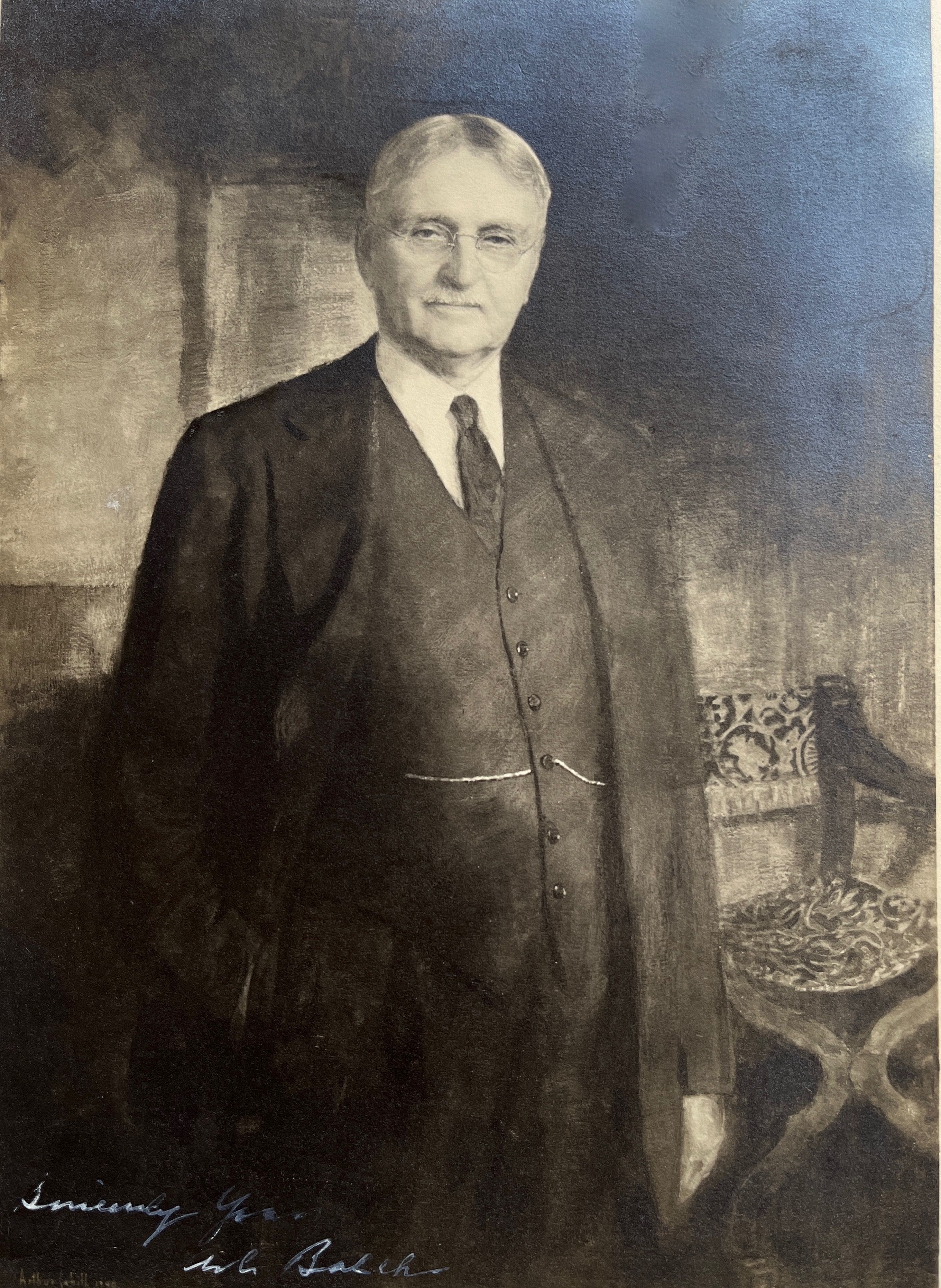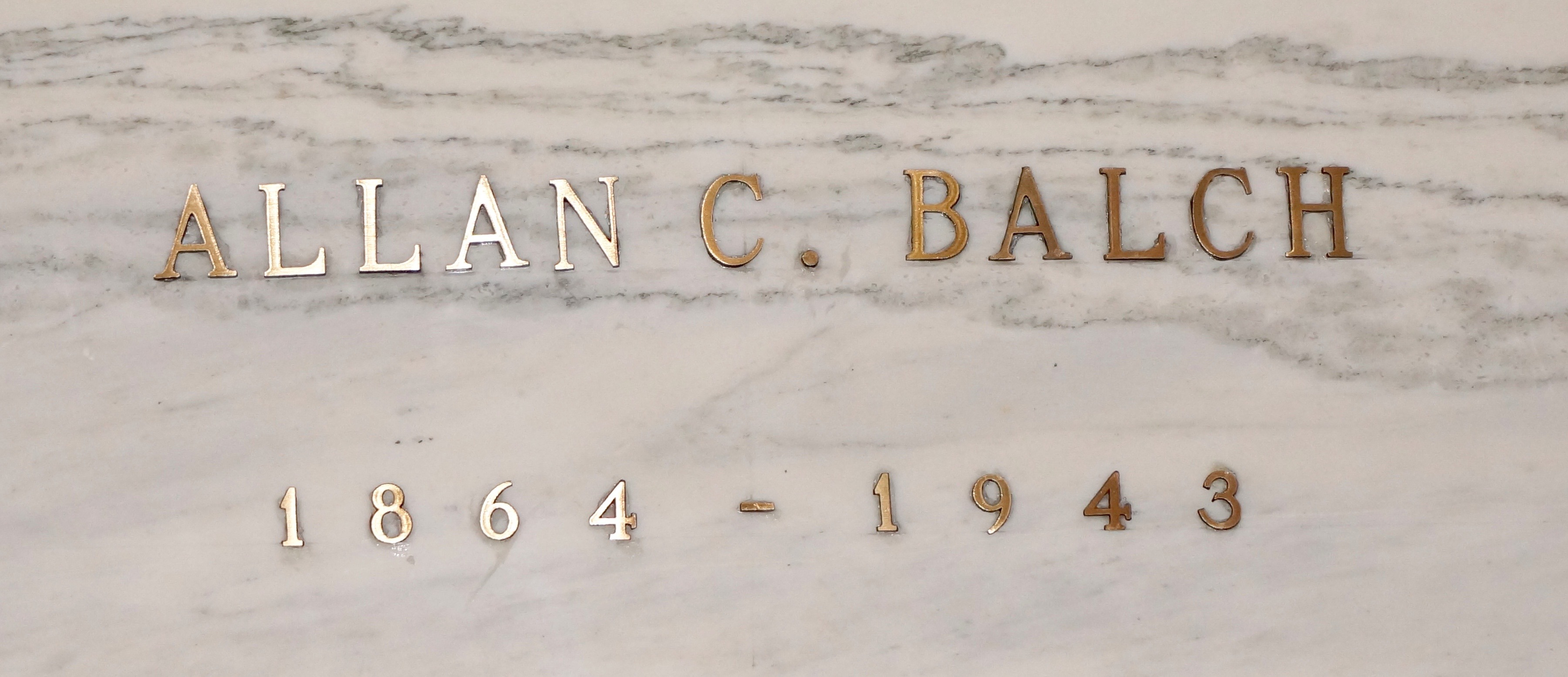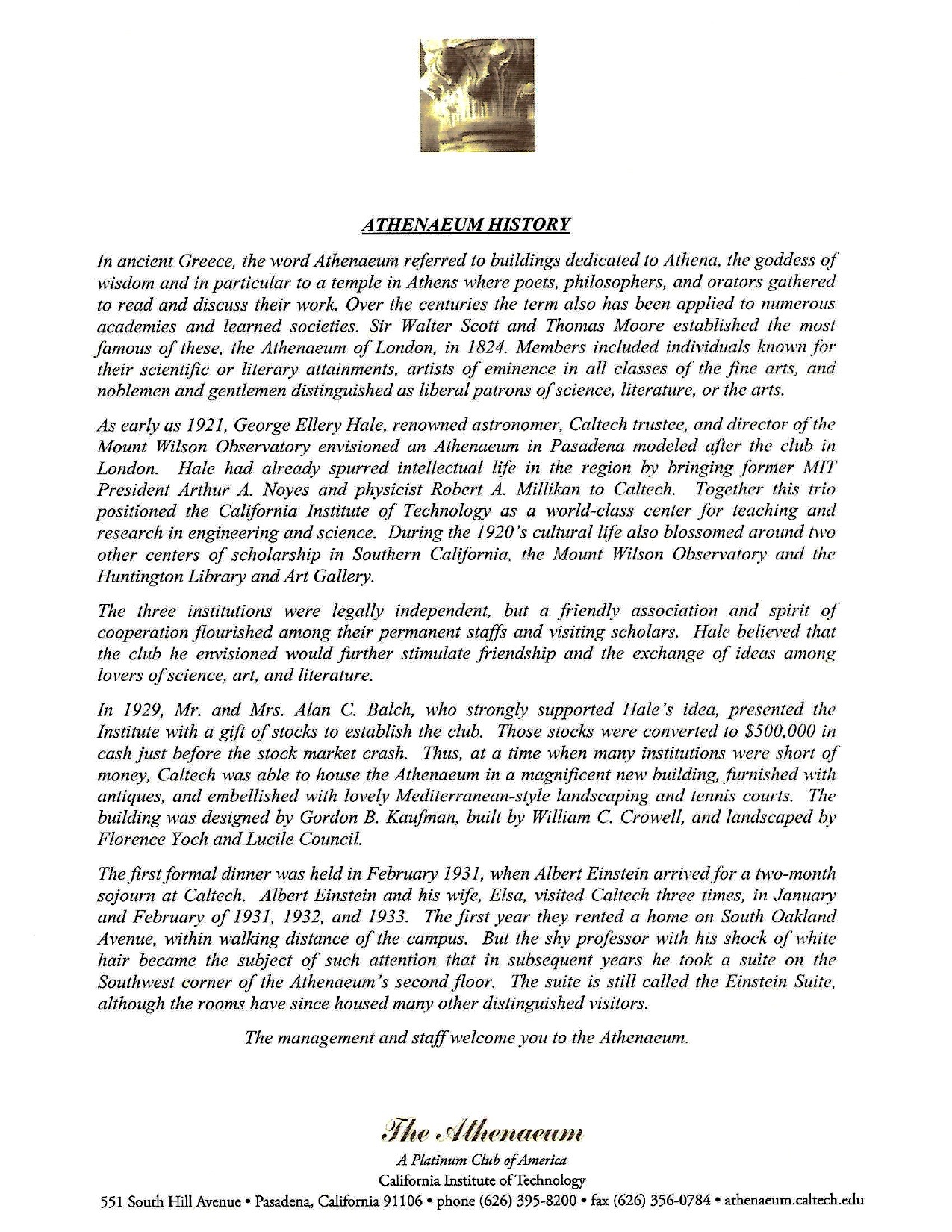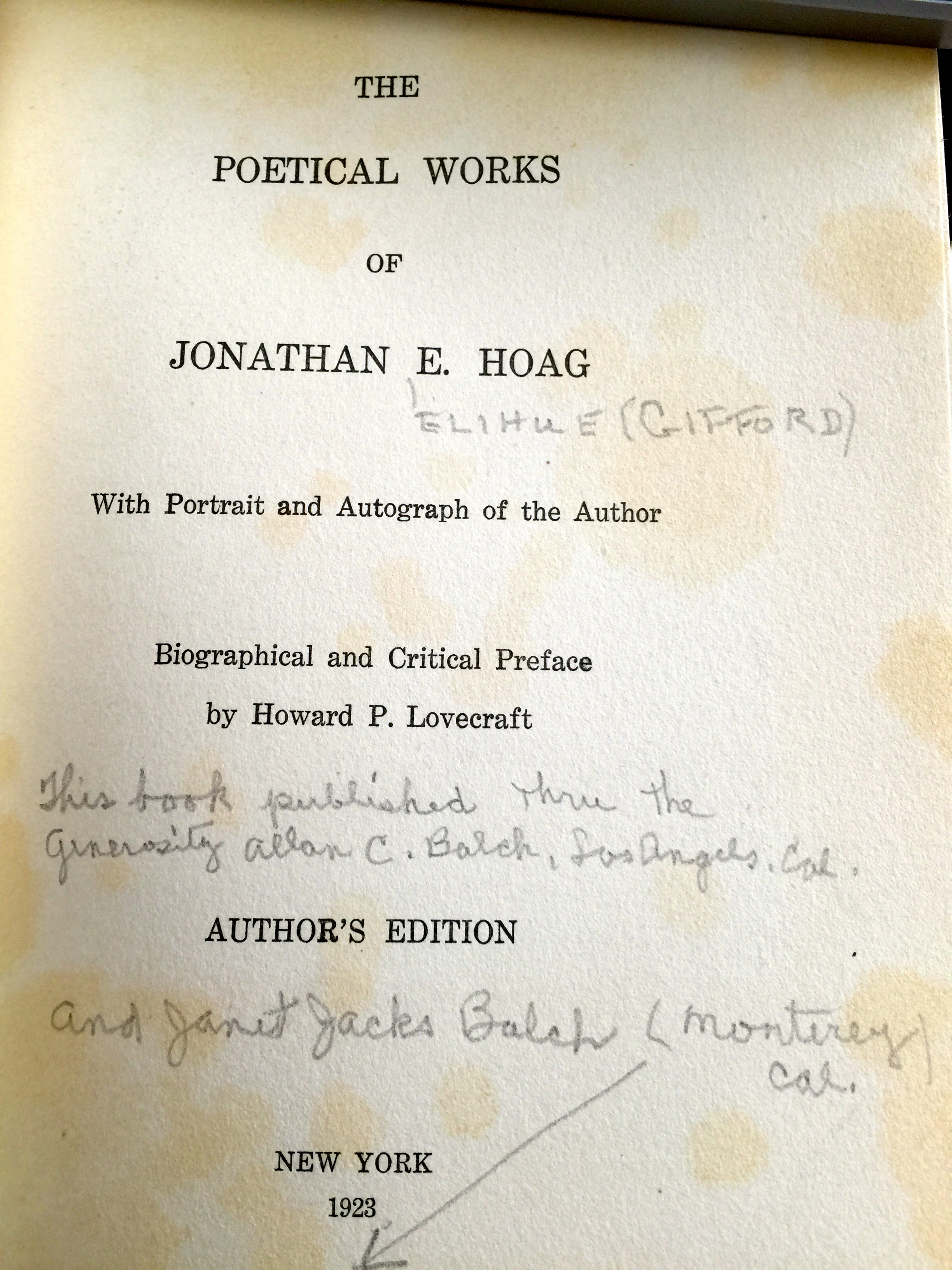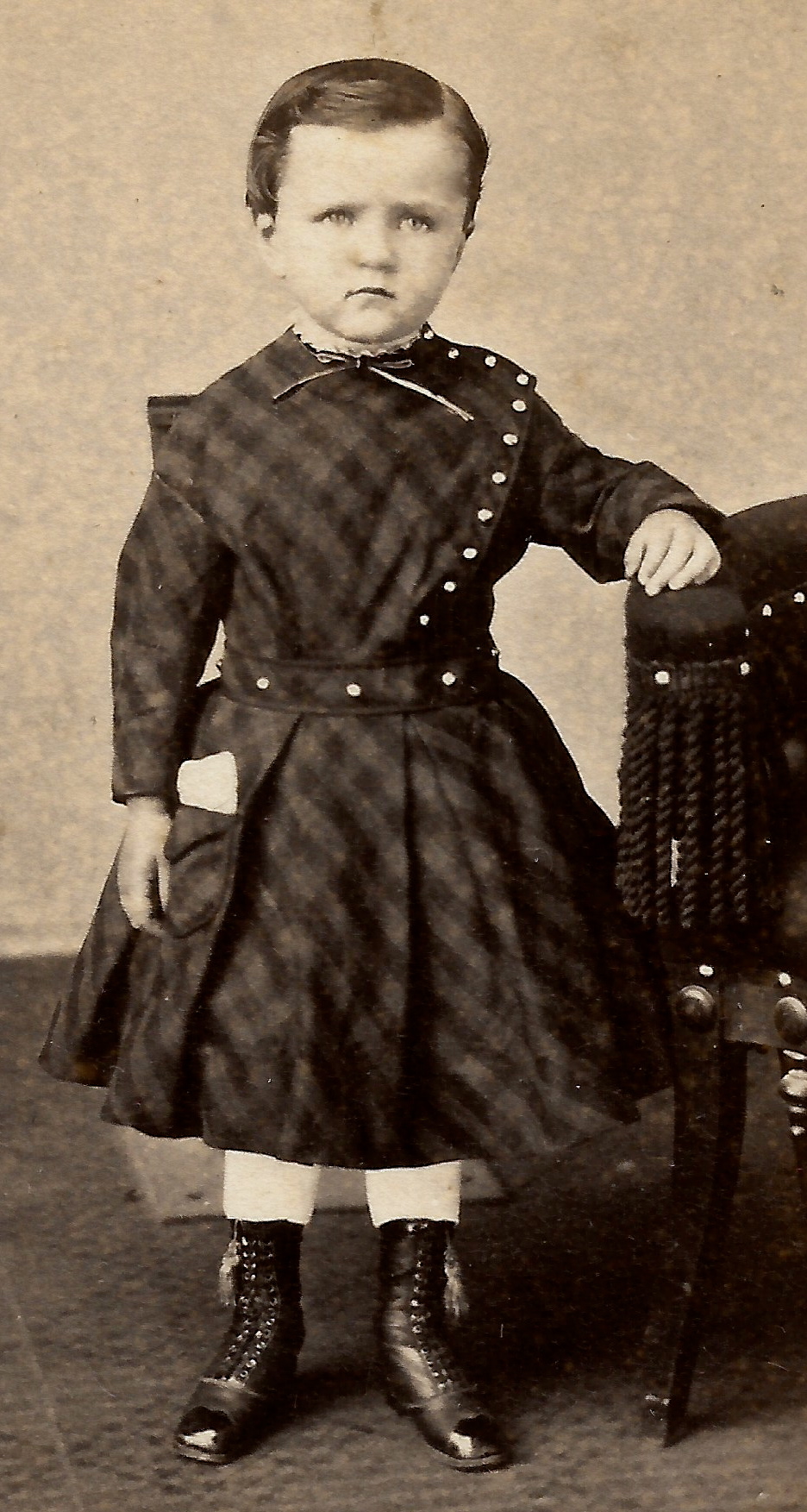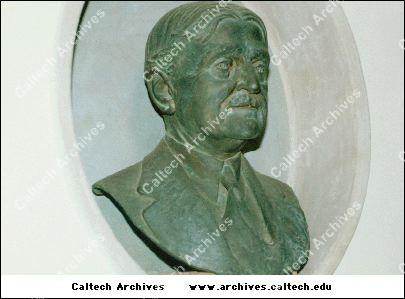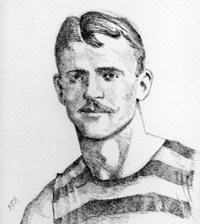Here are only some of the details of the interesting life of Allan Christopher Balch (1864-1943). He was an important pioneer in the development and management of Electric power in the west in the early 20th century. He was one of the founders of the company which eventually became PG&E and Southern California Edison. He was an early century multi-millionare, who donated generously to education and the arts.
Balch was born and raised in upstate New York, son of Ebenezer Atwood (1827-1892) and Hannah Hoag (1833-1921) Balch. He had two siblings, Elizabeth (Libbie) and Howard. Balch was born in Valley Falls and his family later moved to Greenwich, NY, where is father was a successful businessman. Allan Balch attended Cornell University, graduating in 1889 with degrees in M.E. and E.E. At Cornell he was a star athlete, President of the Athletic Association, center for Cornell's first football team (1887), and was vice commodore and stroke of the 1887 varsity crew which won IRA championships. He was also a member of the Alpha Delta Phi.
While at Cornell Balch earned money at the blacksmith shop. It was there that he met his wife, Janet Jacks, who brought her horse in for shoeing. They married April 29, 1891 and moved west for more opportunity. Jacks was from the wealthy land owning family of David Jacks (1822-1909) of Monterey, CA.
Balch first worked in electric systems operations in Seattle and Portland. He then moved to Los Angeles in 1896. There he teamed up with William Kerckhoff, who with the backing of powerful men such as Henry E. Huntington, founded, purchased, or managed three of the largest independent utilities in Southern California.
Equally important were the Balch's philanthropic endeavors. Balch was a founding donor to the Los Angeles County Museum of Art. The Balches developed an important collection of art, pottery and ancient glass. Balch was known to enjoy high stakes bets during golfing matches. Particularly with an art dealer from Persia, betting as high as a $30,000 ceramic or such. In 1938 Balch became the first chairman of Museum Associates. The Balches were the first to bequest their collection and one-eighth of their estate to the museum.
The Balches also funded a large residential hall for Cornell in 1929, Balch Hall, doubling accommodations for female students. They also funded the building of the Athenaeum at Caltech where Balch was an early Trustee. This facility has been called the finest faculty club in America. It has hosted dinners with Albert Einstein, Edwin Hubble, and other Nobel winners. Balch made donations for the large 200-inch lens for the Palomar Observatory. See Janet Balch's biography for even more philanthropy - such as significant donations to the LA Symphony, Hollywood Bowl, Scripps College, Huntington Library and more.
From Caltech Alumni Review Sept 1938:
"Dr. William B. Munro served as toastmaster, introducing an assembly of guests such as never before has graced our speakers' table. Invited to meet with us this year were members of the Board of Trustees of the Institute. Mr. Allan C. Balch, chairman of the Board, won his audience completely with his fine personality and reminiscences of early days in electrical engineering and development of engineering organizations. He recalled construction of the world's first high voltage transmission line, built by an organization which he founded, from a power house in San Antonio canyon to San Bernardino. Mr. Balch was shown the appreciation of alumni for his donation of several funds, leadership on the building committee and untiring efforts in behalf of the Institute."
From 1953 Caltech Financial statement: "...near-record year as far as increase in the Institute’s total assets is concerned. The net increase from all sources was $5,200,000. Most of this came from the final settlement of the Balch estate."
Additionally Balch was a member of the California Club, the LA County Club, Crag's Country Club, the Pacific Union Club and the Bohemian Club of San Francisco. He was a thirty-second degree Mason, a Knight Templar, and a Shriner.
It should be noted Allan's name is often misspelled as Allen.
Here is an interesting story about Allan Balch and David Jacks (father-in-law):
http://www.electricscotland.com/history/articles/friends.htm
Also about Caltech Athenaeum: https://www.athenaeumcaltech.com/Default.aspx?p=DynamicModule&pageid=342358&ssid=243574&vnf=1
Writer is Balch's first cousin, 2x removed. His generosity supported my father through college and beyond. In 2011 my cousins and I donated the name plates to his and Janet's tomb as a thank you for their support of our parents.
Here are only some of the details of the interesting life of Allan Christopher Balch (1864-1943). He was an important pioneer in the development and management of Electric power in the west in the early 20th century. He was one of the founders of the company which eventually became PG&E and Southern California Edison. He was an early century multi-millionare, who donated generously to education and the arts.
Balch was born and raised in upstate New York, son of Ebenezer Atwood (1827-1892) and Hannah Hoag (1833-1921) Balch. He had two siblings, Elizabeth (Libbie) and Howard. Balch was born in Valley Falls and his family later moved to Greenwich, NY, where is father was a successful businessman. Allan Balch attended Cornell University, graduating in 1889 with degrees in M.E. and E.E. At Cornell he was a star athlete, President of the Athletic Association, center for Cornell's first football team (1887), and was vice commodore and stroke of the 1887 varsity crew which won IRA championships. He was also a member of the Alpha Delta Phi.
While at Cornell Balch earned money at the blacksmith shop. It was there that he met his wife, Janet Jacks, who brought her horse in for shoeing. They married April 29, 1891 and moved west for more opportunity. Jacks was from the wealthy land owning family of David Jacks (1822-1909) of Monterey, CA.
Balch first worked in electric systems operations in Seattle and Portland. He then moved to Los Angeles in 1896. There he teamed up with William Kerckhoff, who with the backing of powerful men such as Henry E. Huntington, founded, purchased, or managed three of the largest independent utilities in Southern California.
Equally important were the Balch's philanthropic endeavors. Balch was a founding donor to the Los Angeles County Museum of Art. The Balches developed an important collection of art, pottery and ancient glass. Balch was known to enjoy high stakes bets during golfing matches. Particularly with an art dealer from Persia, betting as high as a $30,000 ceramic or such. In 1938 Balch became the first chairman of Museum Associates. The Balches were the first to bequest their collection and one-eighth of their estate to the museum.
The Balches also funded a large residential hall for Cornell in 1929, Balch Hall, doubling accommodations for female students. They also funded the building of the Athenaeum at Caltech where Balch was an early Trustee. This facility has been called the finest faculty club in America. It has hosted dinners with Albert Einstein, Edwin Hubble, and other Nobel winners. Balch made donations for the large 200-inch lens for the Palomar Observatory. See Janet Balch's biography for even more philanthropy - such as significant donations to the LA Symphony, Hollywood Bowl, Scripps College, Huntington Library and more.
From Caltech Alumni Review Sept 1938:
"Dr. William B. Munro served as toastmaster, introducing an assembly of guests such as never before has graced our speakers' table. Invited to meet with us this year were members of the Board of Trustees of the Institute. Mr. Allan C. Balch, chairman of the Board, won his audience completely with his fine personality and reminiscences of early days in electrical engineering and development of engineering organizations. He recalled construction of the world's first high voltage transmission line, built by an organization which he founded, from a power house in San Antonio canyon to San Bernardino. Mr. Balch was shown the appreciation of alumni for his donation of several funds, leadership on the building committee and untiring efforts in behalf of the Institute."
From 1953 Caltech Financial statement: "...near-record year as far as increase in the Institute’s total assets is concerned. The net increase from all sources was $5,200,000. Most of this came from the final settlement of the Balch estate."
Additionally Balch was a member of the California Club, the LA County Club, Crag's Country Club, the Pacific Union Club and the Bohemian Club of San Francisco. He was a thirty-second degree Mason, a Knight Templar, and a Shriner.
It should be noted Allan's name is often misspelled as Allen.
Here is an interesting story about Allan Balch and David Jacks (father-in-law):
http://www.electricscotland.com/history/articles/friends.htm
Also about Caltech Athenaeum: https://www.athenaeumcaltech.com/Default.aspx?p=DynamicModule&pageid=342358&ssid=243574&vnf=1
Writer is Balch's first cousin, 2x removed. His generosity supported my father through college and beyond. In 2011 my cousins and I donated the name plates to his and Janet's tomb as a thank you for their support of our parents.







